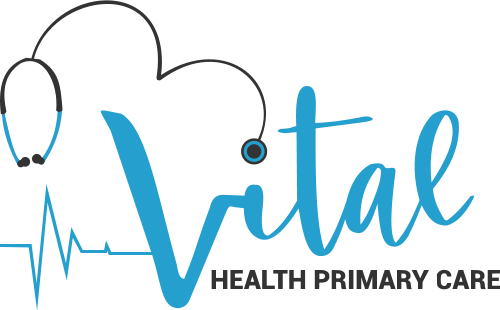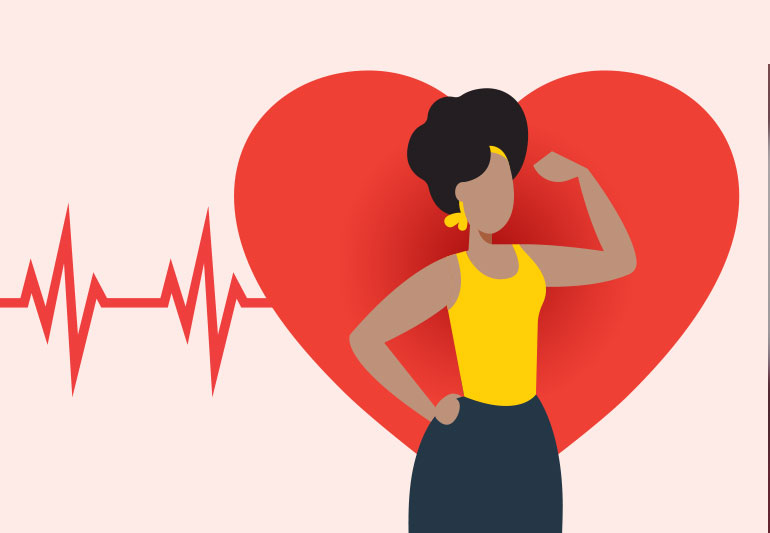Cardiovascular disease is the leading cause of death in women, but many of us don’t know what to look for or when to get help. Women have unique risk factors and symptoms that can make heart disease difficult to detect—and some women are even misdiagnosed as having mental health issues instead of cardiovascular problems. However, there’s good news: If you know your risk factors and follow preventive steps, you can lower your risk of developing or dying from heart disease. Here’s everything you need to know about this silent killer:
Heart disease is the No. 1 killer of women over age 25 in the United States.
In the United States, heart disease is the No. 1 killer of women over age 25. In fact, it’s the No. 1 killer of both men and women—but women are more likely to die from heart disease than men because they tend to develop it at younger ages and experience more complications from their illness.
In many other countries around the world, however, heart disease is still the leading cause of death for everyone—men and women alike (the United States ranks third).
Women’s heart attacks are different from men’s.
Don’t be fooled by the fact that women’s heart attacks and men’s heart attacks look similar—they’re not. For example, although both sexes may develop chest pain during a heart attack, women are more likely to have atypical symptoms such as fatigue or nausea. Women’s hearts also function differently than men’s: they tend to have smaller arteries and less blood flow after a heart attack (a condition known as “ischemia”).
This makes it harder for women to detect when they’re having one of these under-the-radar episodes, which makes it especially important for them to understand their risk factors so that they can get help quickly if one does occur.
Pre-existing health conditions such as high blood pressure can increase a woman’s risk of heart disease.
- Pre-existing health conditions such as high blood pressure can increase a woman’s risk of heart disease. Untreated high blood pressure, for example, may lead to other health problems such as stroke, kidney disease and vision loss.
- The good news is that you can take steps to manage your blood pressure and reduce your risk of heart disease. Talk with your healthcare provider about ways to manage this condition so you can live a healthy life!
Heart disease symptoms are not always clear-cut.
Heart attacks in women are often not as clear-cut as they are in men. Women may experience different symptoms than men, and a heart attack can happen without any warning at all.
Women are less likely than men to have classic symptoms like chest pain, shortness of breath and nausea. The most common symptoms include:
- Chest discomfort (pressure, tightness or squeezing)
- Discomfort spreading to shoulders, jaw or back
- Indigestion or nausea
- Shortness of breath
If you feel these things but aren’t sure if it’s a heart attack, call 911 immediately and ask for an ambulance instead of driving yourself to the hospital (unless there is no other option).
In some cases, doctors can’t find a medical reason for women’s heart attacks and call them spontaneous coronary artery dissection, or SCAD.
If you have a heart attack, it’s likely due to atherosclerosis. But in some cases, doctors can’t find a medical reason for women’s heart attacks and call them spontaneous coronary artery dissection (SCAD).
In SCAD, a tear forms in the inner lining of one of the blood vessels that supply blood to the heart. This may cause blood clots or fat deposits to break off and block another artery—a process called plaque disruption. This type of heart attack is rare and occurs more often in women than men. It typically happens during exercise or other physical activity that makes your body move faster than usual.
Women who survive a heart attack should ask their doctors about getting a cardiac rehabilitation program recommended to improve overall health and reduce the chance of another heart attack.
After having a heart attack, patients should ask their doctors about getting a cardiac rehabilitation program. This is a group program that helps people who have had heart attacks or heart disease learn about their condition and how to manage it. It is designed to help people recover from their heart attack, reduce their risk of another heart attack, and improve their overall health. The goal of cardiac rehabilitation is not only to increase the patient’s endurance but also to change lifestyle habits that could lead to further problems with the heart—such as smoking or overeating—and improve overall physical fitness so they can live longer and avoid future complications such as diabetes or high blood pressure.
Emotional stress, depression and anxiety could increase a woman’s risk of developing heart disease.
It’s no secret that stress can increase blood pressure and cholesterol levels. But did you know that stress, depression and anxiety are also risk factors for heart disease in women?
Emotional stress is one of the most common causes of increased blood pressure in women. When faced with stressful situations, such as death or divorce, a woman’s body releases hormones called catecholamines (norepinephrine and epinephrine). These hormones cause the heart rate to speed up and constricts the blood vessels—both actions that raise your blood pressure.
Depression also raises a woman’s risk of developing high blood pressure. Women with depression have higher odds of having high systolic blood pressure than women without depression (systolic refers to “top number” on a medical chart). Anxiety also increases a woman’s risk of developing high systolic or diastolic (bottom number) pressures because it causes the adrenal glands to release more norepinephrine into the bloodstream—which makes these hormones act similar to those released during stress reactions.
Women need to know their risk factors for heart disease, recognize early signs of a heart attack and talk to their health care team about how they can protect their hearts.
Heart disease kills more women in the United States than any other disease. Women are more likely than men to have heart problems, and they’re more likely to die from them.
Heart attacks in women can differ from those in men because of differences in hormones, body size and shape, and even heart anatomy. Even if you think you’re too young for heart attack symptoms—or that chest pain is a sign of something else—don’t ignore them: Getting help quickly when it’s needed can save your life or prevent lasting damage from a stroke or other complications.
Conclusion
Heart disease is a serious issue for women. It’s important to understand how your individual risk factors may affect your heart health and what you can do about them. If you notice any of the symptoms of a heart attack or other cardiovascular problems, call 911 immediately or go to an emergency room. Your life may depend on it!



